Researchers from the Machine Perception Laboratory at the University of California, San Diego have teamed up with Japanese robotics firm Kokoro Co., Ltd. to create a sophisticated humanoid robot modeled after a 1-year-old child.
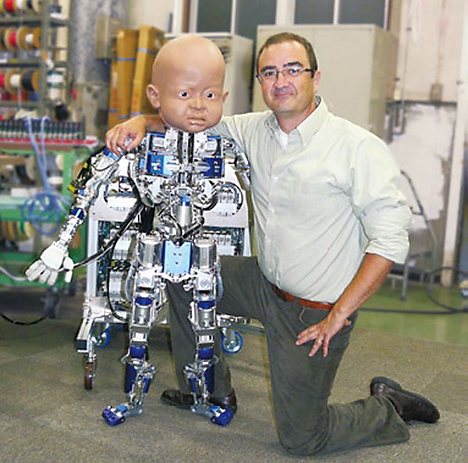
The baby robot -- named "Diego-san" -- is designed to help researchers study how infants develop motor skills during the first year of life, according to a recent Kokoro newsletter (PDF). In addition to providing clues about how infants interact with the physical world, researchers will also use the robot to explore how babies acquire and refine the ability to use nonverbal communication such as gestures and facial expressions.
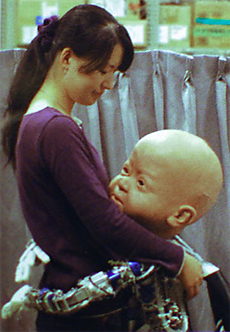
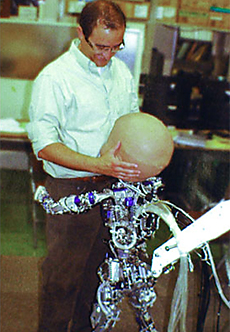
Diego-san's body has over 60 moving parts, making it Kokoro's most sophisticated robot to date. The robot weighs 30 kilograms (66 lbs) and is 1.3 meters (4 ft 3 in) tall, which is quite a bit larger than the average 1-year-old.
The baby humanoid also has a rather sizable head, thanks to 20 moving parts that allow it to make facial expressions, along with high-resolution cameras for eyes, an audio speaker in the mouth, and 6-axis accelerometers in the ears that allow it to detect orientation and movement.
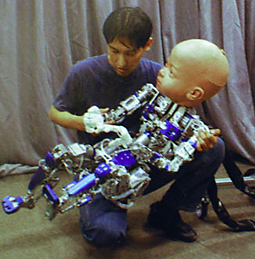
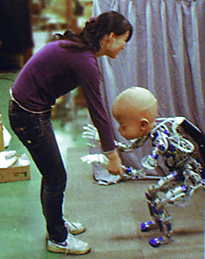
Other features include 5-fingered hands capable of holding objects such as plastic bottles, sensors that detect the amount of pressure placed on different joints in its body, and the ability to stand up from a sitting position in a chair.
Apparently, Diego-san's face is still under development (the rubber face shown in the photos is just the first prototype). The researchers are still debating about whether the robot should have a realistic human-like face or one that looks more mechanical.
[Source: Kokoro News (PDF) via BotJunkie via somebadideas]

yoda2486
Make his face look like Wall-E!
[]Lanna
Come on. Just do a mechanical-like face. A human-like face on a robot will always look freaky, and fake.
[]Sam Handel
Kill it! Kill it with fire!
[]Edo
LOL!
Daft Punk "Technologic" video, anyone? anyone?
[]bethany
Omg yes this is the reason why robots will take over the earth!!!
[]Glendon Mellow
Holy monkey, those photos look reeeeeally Photoshopped.
The top photo it's feet barely look like they're in the right place, or even touching the ground. And they are all grainy.
If that's all real, it is impressive how they have such a top-heavy head on such itty bitty feet.
[]Chess Mercy
hi folks! Soon we will reach Terminator status, go on!
[]Hank
Why isn't there any YouTube -videos?
[]picketf
Glendon Mellow:
[]Why assume the head to be heavy? The size does not correspond with weight. The feet are small because of the accelerometers; given a shaky condition the robot foot would immediately react to counterbalance weight to the other leg preventing it from falling
I'm guessing the OP pic was taken as the robot was deactivated in a fixed position to prevent it from making any moves and spoiling the shot
Dakota The Great
OK, this thing is kinda giving me the goosebumps....im gonna have nightmares tonight....
[]akash
but why u r gonna have goosebumps for this robot toddler????
[]